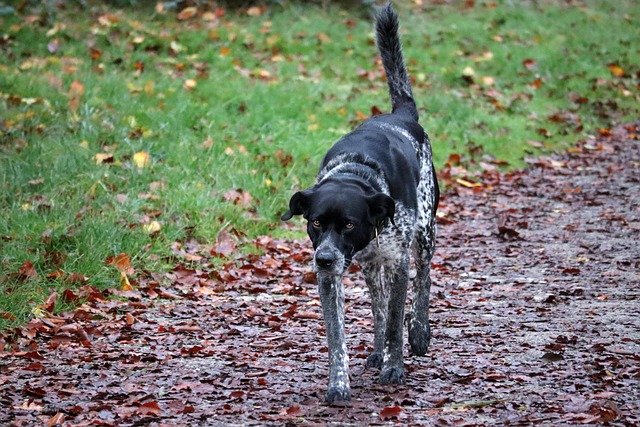How to Train Dogs for Search and Rescue Missions in 2025: The Ultimate Guide
Estimated reading time: 12 minutes

Key Takeaways
- The best breeds for SAR work include German Shepherds, Labradors, and Border Collies
- Modern training techniques combine traditional methods with AI, wearable tech, and genetic testing
- Basic obedience is crucial before specialized SAR training
- Positive reinforcement is more effective than punishment-based training
- Certification through organizations like ARDA is essential for real-world SAR work
Table of Contents
- Understanding Search and Rescue Dog Techniques
- Step-by-Step SAR Dog Training Process (2025 Methods)
- Fixing Common SAR Dog Behavior Problems
- The Future of SAR Dog Training (2025 Trends)
- Frequently Asked Questions
Understanding Search and Rescue Dog Techniques
SAR dogs use different methods to find people. Here’s how they work:
1. Air Scenting
- Dogs sniff the air for human scent
- Great for open areas like forests
2. Trailing
- Dogs follow a specific person’s scent trail
- Useful for tracking lost hikers
3. Cadaver Detection
- Dogs find human remains
- Important for disaster recovery
4. Urban Search and Rescue (USAR)
- Dogs search through rubble after earthquakes or explosions
Key Traits of a Great SAR Dog:
- High energy
- Strong nose
- Good focus
- Brave but not aggressive
Modern training in 2025 mixes old-school methods with new tech. For example, GPS trackers help handlers monitor a dog’s path in real time. Source: Dog Training Geek
Step-by-Step SAR Dog Training Process (2025 Methods)
Step 1: Picking the Right Dog
Not all dogs can be SAR heroes. The best breeds include:
- German Shepherds – Smart and strong
- Labradors – Friendly and hardworking
- Border Collies – Fast learners
Temperament Matters More Than Breed!
A good SAR dog must:
- Love to work
- Stay calm in chaos
- Be eager to please
Pro Tip: For more on breed-specific traits, check out our guide on fluffy dog breeds, which highlights energy levels and adaptability. Source: International Dog Trainer School

Step 2: Basic Obedience Training
Before SAR training, your dog must master:
- Sit, Stay, Come – Basic commands
- Heel – Walking nicely on a leash
- Leave It – Ignoring distractions
Training Tip: Use treats and praise. Never punish—it makes dogs nervous. For foundational training, explore our puppy training guide.
Step 3: Specialized SAR Training
The Bucket Drill Method
This teaches dogs to track scents:
- Hide a treat in a bucket
- Let the dog sniff it out
- Reward when they find it
Scenario Training
Train in real-life settings:
- Wilderness – Forests, mountains
- Urban – Rubble, buildings
- Disaster Zones – Loud noises, smoke
Pro Tip: Start easy and slowly make it harder. For safety in outdoor training, review our dog hiking gear essentials.
Step 4: Certification & Real-World Practice
To become a certified SAR team, you must:
- Pass tests from groups like ARDA
- Do mock rescue drills
- Train with emergency teams
Source: American Rescue Dog Association
Fixing Common SAR Dog Behavior Problems
Problem: Dog Gets Distracted
Solution:
- Train in short sessions (5–10 minutes)
- Gradually add distractions
Problem: Fear of Loud Noises
Solution:
- Play sounds (sirens, gunfire) at low volume
- Increase volume slowly while rewarding calm behavior
Related: Learn more about managing stress in our pet mental health guide.
Problem: Too Excited to Focus
Solution:
- Teach a “settle” command
- Use structured playtime to burn energy
Avoid Frustration-Based Training!
A 2025 study found it makes dogs less effective. Always use positive rewards! Source: Virginia Tech Study
The Future of SAR Dog Training (2025 Trends)
1. AI Simulations
- Virtual training helps dogs practice in safe, controlled environments
2. Wearable Tech
- GPS collars track movement
- Health monitors check stress levels
3. Genetic Testing
- DNA tests help pick the best SAR puppies
Deeper Dive: Explore how genetics impact health in our dog health certificate guide.

Final Thoughts: Start Your SAR Training Journey Today!
Training a search and rescue dog is hard work, but it’s worth it. These dogs save lives.
Key Takeaways:
- Pick the right dog (breed + temperament)
- Train basics first, then specialize
- Use rewards, not punishment
- Stay updated on 2025 training tech
Ready to begin? Check out certified programs like:
For more on advanced training, see our service dog training programs guide.
Frequently Asked Questions
- What are the best breeds for search and rescue work?
- How long does SAR dog training take?
- How do I get my dog certified for SAR work?
What are the best breeds for search and rescue work?
While many breeds can excel, German Shepherds, Labradors, and Border Collies are among the top choices due to their intelligence, energy levels, and trainability. However, temperament is more important than breed alone.
How long does SAR dog training take?
Basic training typically takes 6-12 months, while full SAR certification can take 1-2 years of consistent training. The exact timeline depends on the dog’s aptitude and the complexity of the skills being taught.
How do I get my dog certified for SAR work?
Certification is done through organizations like the American Rescue Dog Association (ARDA). The process involves passing standardized tests that evaluate the dog’s search capabilities, obedience, and ability to work in various environments.
